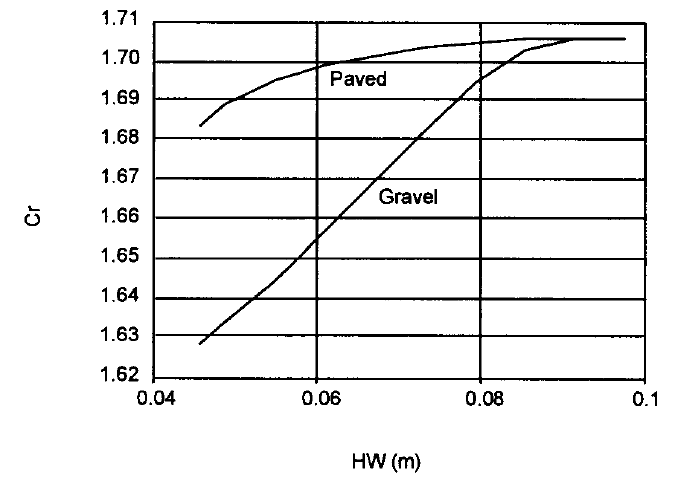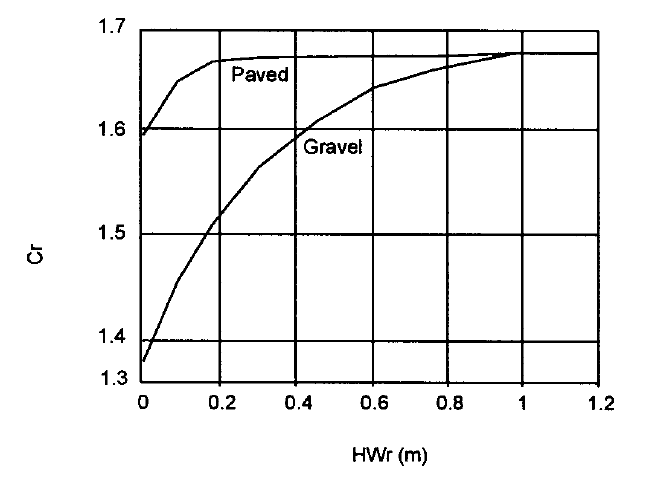Broad-Crested Weir
A broad-crested weir has a crest that extends horizontally in the direction of flow far enough to support the nappe (sheet of water flowing over the crest of the weir) so that hydrostatic pressures are fully developed for at least some short distance.
In order to model Embankment or Roadway overtopping, the Federal Highway Administration (FHWA) has developed a methodology that can be found in the manual FHWA, HDS No. 5, Hydraulic Design of Highway Culverts, 1985, which uses the general broad-crested weir equation.
| Q | = | Discharge over weir (m3 /sec., ft3 /sec.) | |
| Cd | = | Weir coefficient | |
| L | = | Length of roadway crest (m, ft) | |
| Hr | = | Overtopping depth (m, ft) |
Broad-Crested Weir
The overtopping discharge coefficient Cd is a function of the submergence using the equation:
The variables Kt and Cr are defined in the following figures, reproduced from the manual FHWA, HDS No.5, Hydraulic Design of Highway Culverts, 1985. The first two figures are used by Bentley StormCAD to derive the base weir coefficient Cr resulting from deep and shallow overtopping, respectively. The submergence correction Kt is determined implicitly using the third figure.
Discharge Coefficient Cr, for Hr/L > 0.15
Discharge Coefficient Cr, for Hr/L≤ 0.15
Submergence Factor, k






